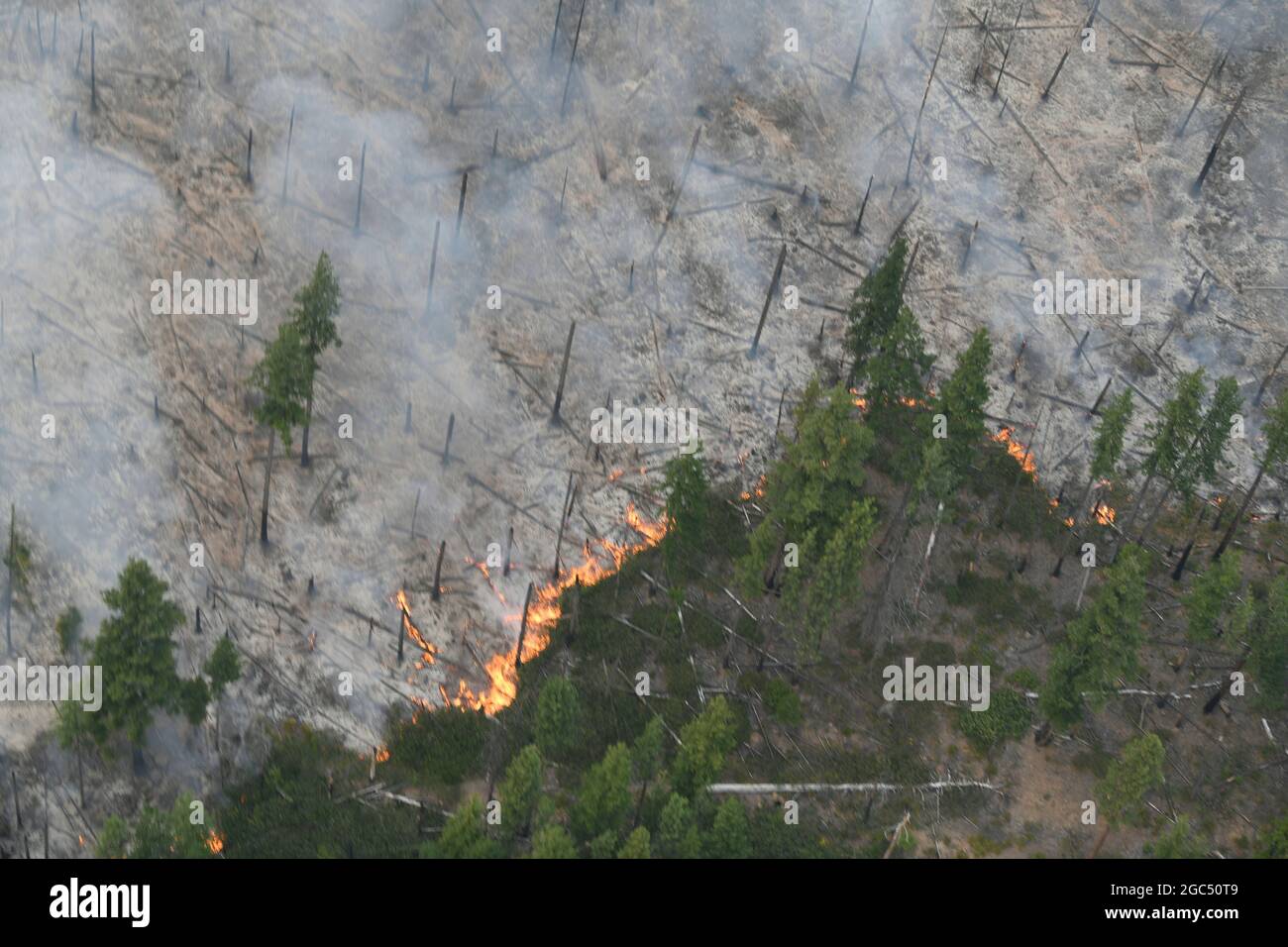Trees burn as forest fires continue in Eastern Oregon. Aug. 22, 2012. UH-60 Blackhawk helicopters from the Oregon Army National Guard’s G/1-189 Aviation (MEDEVAC) out of Salem, Oregon, landed in Madras Municipal Airport to help assist with aerial water drops as well as possible medivac operations. The helicopters are activated for a two week span assisting the Oregon Department of Forestry and local agencies with forest fires that are currently taking place in Eastern Oregon. (Oregon National Guard photo by Tech. Sgt. Aaron Perkins, Oregon Military Department)

Image details
Contributor:
American Photo Archive / Alamy Stock PhotoImage ID:
2GC50T9File size:
292.5 MB (7.6 MB Compressed download)Releases:
Model - no | Property - noDo I need a release?Dimensions:
12384 x 8256 px | 104.9 x 69.9 cm | 41.3 x 27.5 inches | 300dpiDate taken:
22 August 2020Location:
United StatesMore information:
This image is a public domain image, which means either that copyright has expired in the image or the copyright holder has waived their copyright. Alamy charges you a fee for access to the high resolution copy of the image.
This image could have imperfections as it’s either historical or reportage.
A wildfire, bushfire, wild land fire or rural fire is an unplanned, unwanted, uncontrolled fire in an area of combustible vegetation starting in rural areas and urban areas. Depending on the type of vegetation present, a wildfire can also be classified more specifically as a forest fire, brush fire, bushfire (in Australia), desert fire, grass fire, hill fire, peat fire, prairie fire, vegetation fire, or veld fire.[2] Many organizations consider wildfire to mean an unplanned and unwanted fire, [3] while wild land-fire is a broader term that includes prescribed fire as well as wildland fire use (WFU; these are also called monitored response fires).[3][4] Fossil charcoal indicates that wildfires began soon after the appearance of terrestrial plants 420 million years ago.[5] The occurrence of wildfires throughout the history of terrestrial life invites conjecture that fire must have had pronounced evolutionary effects on most ecosystems' flora and fauna.[6] Earth is an intrinsically flammable planet owing to its cover of carbon-rich vegetation, seasonally dry climates, atmospheric oxygen, and widespread lightning and volcanic ignitions.[6] Wildfires can be characterized in terms of the cause of ignition, their physical properties, the combustible material present, and the effect of weather on the fire.[7] Wildfires can cause damage to property and human life, although naturally occurring wildfires [8] may have beneficial effects on native vegetation, animals, and ecosystems that have evolved with fire.[9][10] Wildfire behavior and severity result from a combination of factors such as available fuels, physical setting, and weather.[11][12][13][14] Analyses of historical meteorological data and national fire records in western North America show the primacy of climate in driving large regional fires via wet periods that create substantial fuels, or drought and warming that extend conducive fire weather.